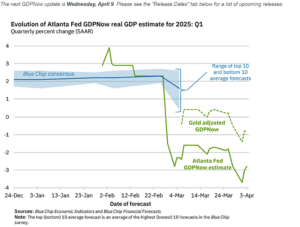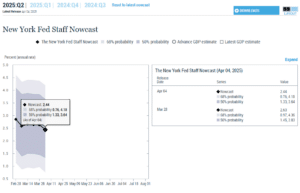
Navigating the Latest Tariffs and the Illusion of Permanence
While I generally consider myself a better speaker than a writer, I hope this post provides some calm amidst recent uncertainty.

The Four State Challenge Winner
First, on a personal note—I’m thrilled to share that I successfully completed the #4StateChallenge last weekend. With only 90 minutes of sleep, I hiked 45 miles of the Appalachian Trail in 21 hours and 17 minutes. It was incredibly challenging, yet it reminded me of something important: Doing hard things frames everything else as easier. More on that adventure soon!
Now, About Those Tariffs…
The recent tariff announcement by the Trump administration on April 2, 2025, understandably sparked concerns. Here’s our perspective, addressing key questions and providing guidance:
1. What’s Happening, and What’s the Tariff Structure?
Starting April 5, 2025, a universal 10% tariff applies to all imported goods unless exemptions are granted. Additionally, beginning April 9, targeted “reciprocal tariffs” (up to 54%, notably affecting China) will impact around 60 countries identified as unfair trade offenders.
2. Why Now, and How Long Might This Last?
The goal is to reduce a $1.2 trillion trade deficit and revive U.S. manufacturing—an objective long championed by President Trump, who labeled this announcement “Liberation Day.” However, the duration of these tariffs heavily depends on international negotiations and potential retaliations, leaving the timeline uncertain.
3. Should I Worry About a Trade War or Recession?
Global trading partners (EU, China, etc.) have indicated possible retaliation but haven’t yet taken concrete steps. While the risk of a trade war has increased, it remains uncertain. Economists expect slower GDP growth and higher inflation, but currently, there isn’t consensus about an imminent recession. Past tariffs (like the 2018 steel tariffs) slowed growth but didn’t trigger recessions.
4. How Will This Affect My Investments?
Markets initially reacted negatively, particularly hitting import-dependent companies (Apple, Ford, Nike). Treasury yields fell, reflecting increased investor caution. However, our diversified portfolios—spanning stocks, bonds, commodities, and other asset classes—are built precisely for times like these. The key is patience rather than reactionary decisions.
5. Will Tariffs Increase My Cost of Living?
Eventually, these tariffs could increase annual household expenses by approximately $1,700, particularly affecting items like cars and electronics. Immediate price spikes are unlikely since supply chains take time to adjust, and companies may initially absorb some costs—especially where competition exists, like entry-level German cars vs. American-made alternatives.
6. What Should I Do Right Now?
Prepare your budget for potential incremental increases in living costs. If you’ve been considering a major purchase, especially imported goods, acting sooner rather than later might make sense. Regarding your investments, remain calm and avoid emotional, reactionary moves. Gradual adjustments over time are wiser.
Remember: Emotions are poor advisors.
Economic Outlook: Reality Check
The Atlanta Fed’s GDPNow forecast recently triggered heightened recession fears, yet the New York Fed’s forecast—showing slowing but ongoing growth—has garnered far less attention. Our stance remains cautious but optimistic: while risks have increased, it’s premature to embrace dire predictions.
Reflecting on “The Illusion of Permanence”
During a recent walk with my kids, I reflected on the Illusion of Permanence—the emotional tendency to extrapolate current challenges indefinitely into the future.
History repeatedly disproves this perspective:
- 1999: “Technology is dead”
- 2001: Post-9/11 fears—”We’ll never fly again”
- 2008: “Markets and homeownership are finished”
- 2010: Flash Crash panic
- 2011: Fukushima nuclear disaster fears
- 2013: European economic collapse concerns
- 2015: Asian currency crisis panic
- 2018: “U.S. growth can’t continue” and “Cryptocurrency collapse”
- 2020: COVID-19—”Life permanently changed”
- 2022-2024: Global conflicts, banking crises, interest rate spikes
Borrowing wisdom from The Gloria Patri:
“As it was in the beginning, is now, and ever shall be: Markets without end.”
Final Thoughts
The headlines are noisy and rapidly evolving, yet underlying economic fundamentals remain supportive. While recession risks have indeed risen, predictions of economic catastrophe are likely premature, influenced more by the Illusion of Permanence than by data.
Let’s remain balanced, informed, and proactive.
As always, if you have questions or want to discuss this further, please reach out anytime—and feel free to share this post with anyone who might benefit.


